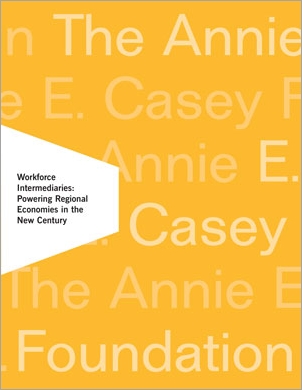This is an excerpt. Click here to read the full report (PDF).
Through the economic ups and downs of the last few years, it has become clear that cities and states simply must have competitive workforce development policies to compete in a changing economy. Coherent and sophisticated training programs accomplish two key goals for policymakers: they help attract knowledge-driven companies that ultimately can help move states away from low-wage economies, and they can connect low-skilled workers to education and training that enhances the economic prospects of these workers.
In the 21st century, local economies won’t stand or fall on the presence of sports stadiums and office parks; they’ll be built on competitive workforce systems. But that work of construction is far more difficult than it sounds. To do it right, workforce systems must balance the oft-competing needs of workers and businesses; leverage millions in new dollars to pay for increased training programs; and link diverse players including nonprofits, colleges, and business associations through common goals and interests.
This is the role of workforce intermediaries, quasi-governmental entities that are quickly becoming indispensable players in 21st century workforce systems. The consensus behind the intermediary approach solidified in early 2003, when the 102nd American Assembly issued a report entitled “Achieving Worker Success and Business Prosperity: The New Role for Workforce Intermediaries.” In this report, we assess lessons learned from three key intermediaries funded by the Annie E. Casey Foundation. As regions across the U.S. work to develop their own intermediaries, the Casey experience offers helpful insights into the importance of intermediaries and what qualities to look for in organizations that can serve in this role.
Workforce intermediaries offer local officials and stakeholders a new approach to an issue of great and growing importance to a region’s (and a nation’s) ability to sustain a vibrant economy. More and more, workforce development is the most critical measure of economic competitiveness: cities and regions that have put effective workforce systems in place are attracting employers drawn by the prospect of well-trained workers and governments responsive to their needs. Intermediaries greatly help to advance local workforce agendas, providing focus for all the disparate players, pots of money, and institutional interests. As this report will show, effective workforce intermediaries can bring order and cohesiveness to a very complicated area of policy, helping to mount effective jobs programs and advance positive agendas to support employers and workers.
The intermediary approach has proven successful within a wide range of institutional settings, including community colleges, federally mandated Workforce Investment Boards (WIBs), state and local government agencies, unions, employer organizations, community development corporations, community development financial institutions, faith-based groups, and community-based organizations. The workforce intermediary approach is defined by organizational attributes and shared goals rather than by institutional setting.
Perhaps the most significant intermediary project to date has been the Annie E. Casey Foundation’s Jobs Initiative. The Jobs Initiative, an unprecedented nine-year, six-city, $30 million effort to reform local labor markets and help connect low-income, low-skilled young people to good jobs, was designed to show the field what could be achieved given adequate, sustained support. Starting in the mid-1990s, Casey had designated local organizations in each of its Jobs Initiative cities to take on two missions: operating successful jobs programs and advocating for positive change in local workforce systems.
Since the Jobs Initiative’s inception, across the six sites 10,124 low-income people have been placed in jobs paying wages averaging over $9.15 per hour. As many as 14 percent of those placed into jobs had no prior work experience; the other participants reported a substantial increase in average hourly wages and weekly earnings. Seattle, Milwaukee, and Philadelphia, which were relatively high achievers, placed a total of 6,655 people in jobs. Their average placement wage was $10.14 per hour, and their one-year average retention rate was more than 57 percent.
When the project formally ended in 2004, several of these workforce intermediaries had made great progress—and were well positioned to continue their work for years to come.


